Review Charger Xtar X4

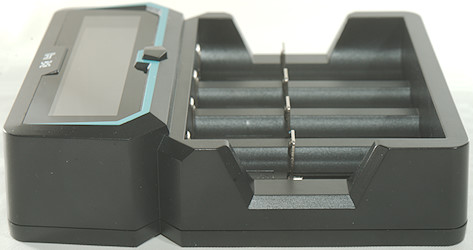
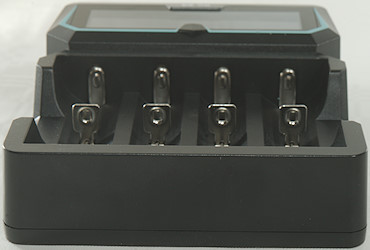
A four slot LiIon and NiMH charge with automatic current selection and both mains and USB power input.
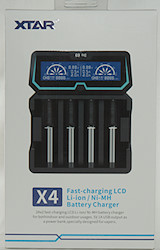

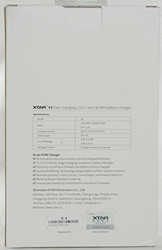

The charger was in a cardboard with specifications on it.
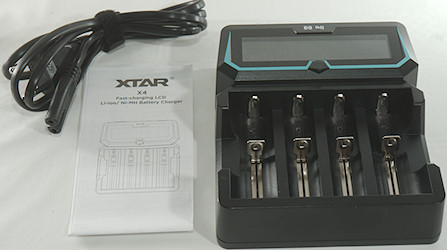
The box included the charger, a USB cable and a instruction sheet.
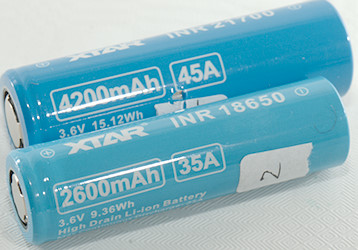
Xtar included two of their batteries, but with only one of each I will not test them.

The charger has input for both USB power and mains power and output for a power bank function.
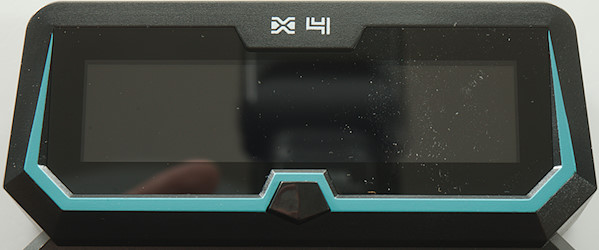
There is a single button on the charger, it can be used to turn backlight on or restore backlight to full power.
It will also switch the display between the slots, this is only required when charging more than two batteries.

During power on all segments will be shown.

No batteries in the charger.

Two LiIon in slot #1 and #2, charge current is 1A for both, this is the case with either USB or mains power.

Two LiIon in slot #1 and #4, charge current is 1A for both, because charge is USB powered.

Two LiIon in slot #1 and #4, charge current is 2A for both when charger is mains powered.

Two NiMH in slot #1 and #3, charge current is 0.5A for both.

USB output is on.
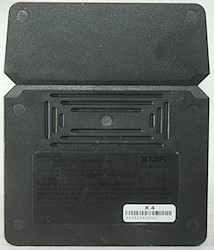
The charger has specifications on the back, with black text on black background.
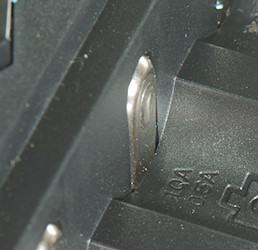
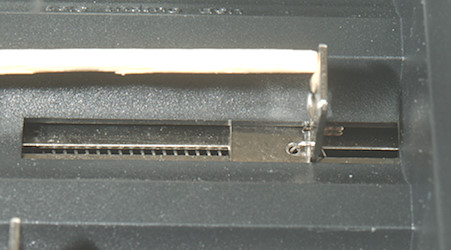
The connection are the common slider style that can handle from 31mm to 72.3mm, this means all batteries except protected 20700 will fit.



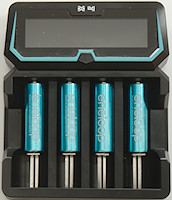
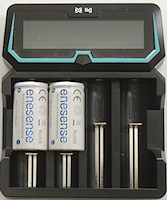
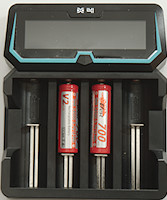
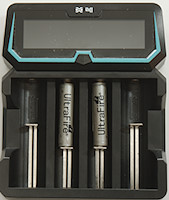
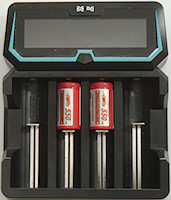
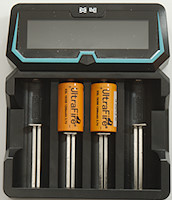
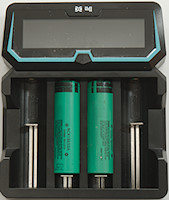
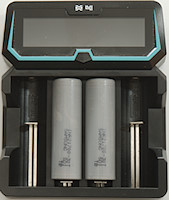
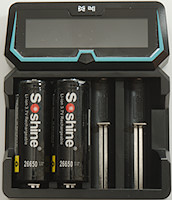
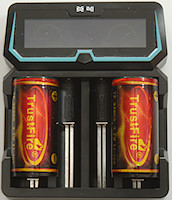
The charge current is on the high side for 10440 batteries.
Measurements charger
- When not powered it will discharge a LiIon battery with about than 0.5mA on a regular slot, but 16mA in USB slot.
- When powered the charge will charge with less than 1mA when finished.
- Below 2V the battery is assumed to be NiMH, above LiIon.
- Charger will restart if battery voltage drops below 3.9V.
- Voltmeter has a minimum reading about 0.8V and will show that from about 0.3V
- Voltmeter is within 0.04V
- LiIon can be charged with 0.5, 1A or 2A.
- NiMH is always charged with 0.5A
- With 1.3V on battery the meter will show 1.41V
- The display show 0.5A when charging NiMH, but the actual current is around 0.8A
- Slots change charge current at 52mm length.
- Background light goes to low brightness after 60 seconds.
- USB input will supply some power when charger is mains powered, this is not very good.
- Mains cable is 33mOhm for each wire, this is fine.
- Power consumption from mains when idle is 0.37 Watt with backlight on full brightness an 0.18 Watt at low.
- Power consumption from USB 5V is 52mA when idle full backlight and 21mA at low.
Charging LiIon
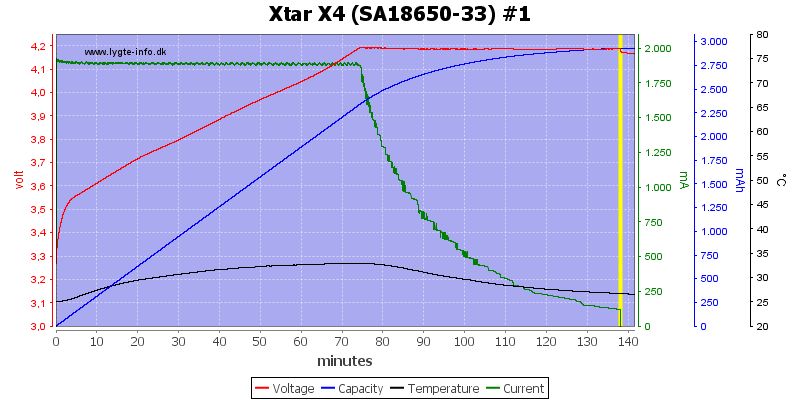
A nice CC/CV charge curve with termination around 100mA. The char current is 2A in this slot.
Display shows 2993mAh
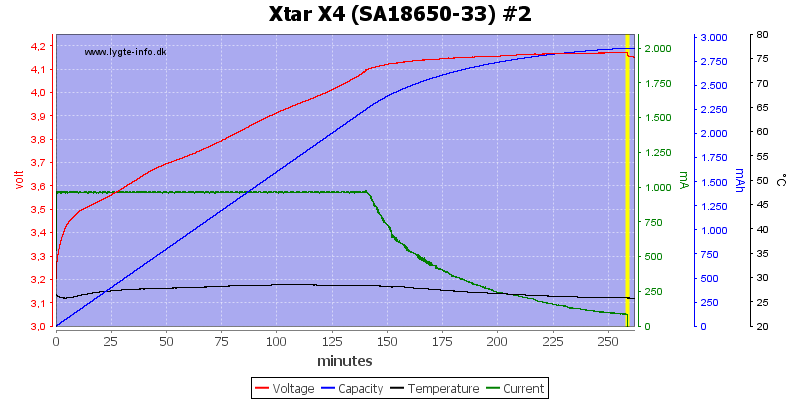
Display shows 2870mAh
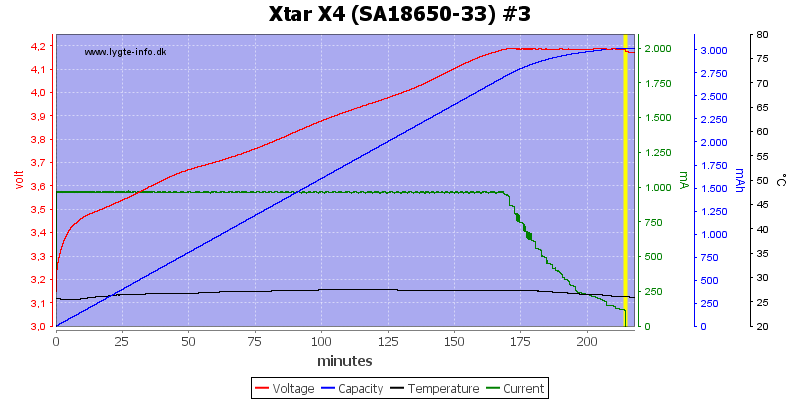
Display shows 3024mAh
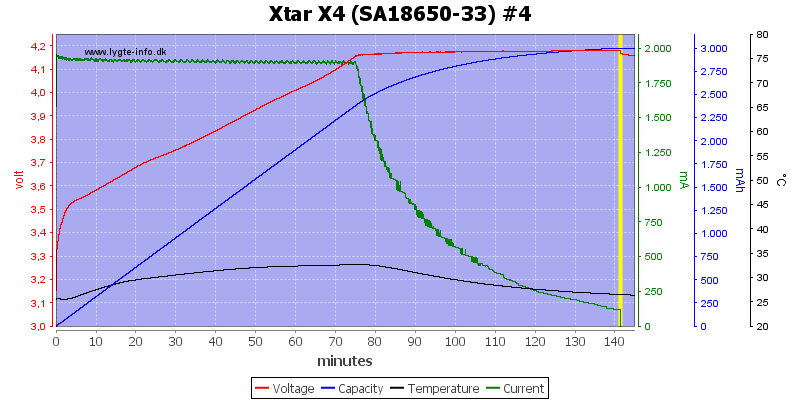
The charger curve in the other slots are similar, it looks like slot #2 has lower termination current than the other slots.
Slot #2 and #3 is 1A charge current, #4 is 2A charge current.
Display shows 3041mAh
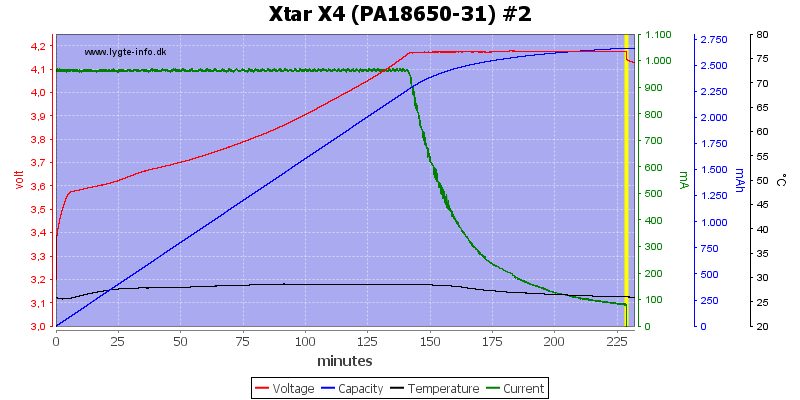
Display shows 2651mAh
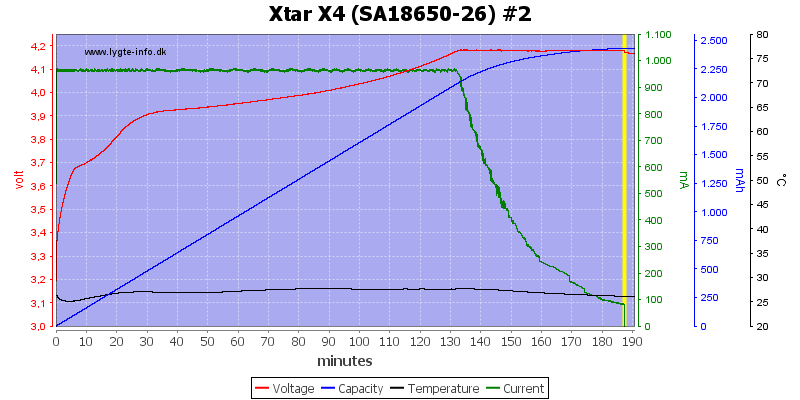
Display shows 2432mAh
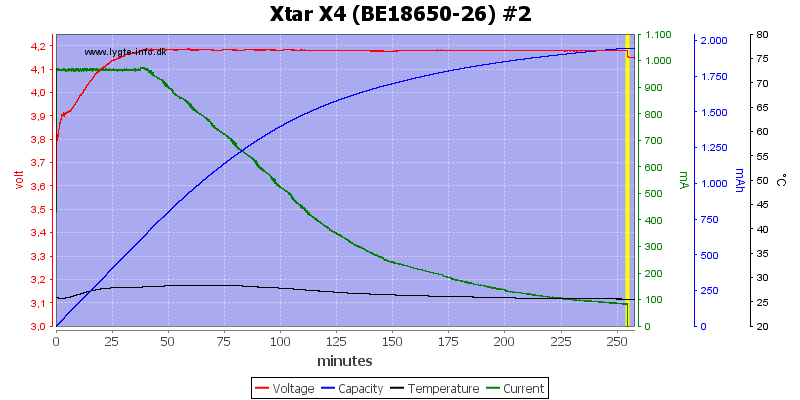
The different batteries is handled nicely in the charger.
Display shows 1886mAh
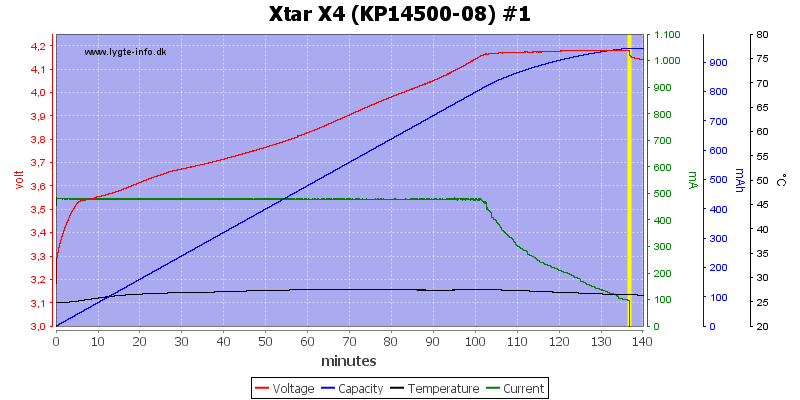
A shorter battery forces the slot into 0.5A charge mode.
Display shows 944mAh
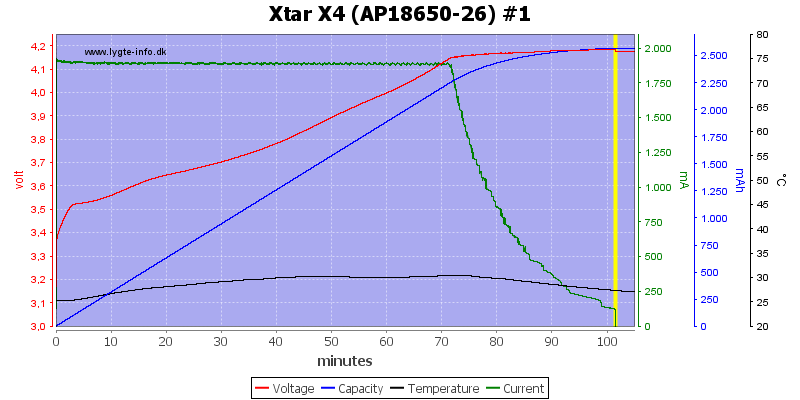
Display shows 2432mAh
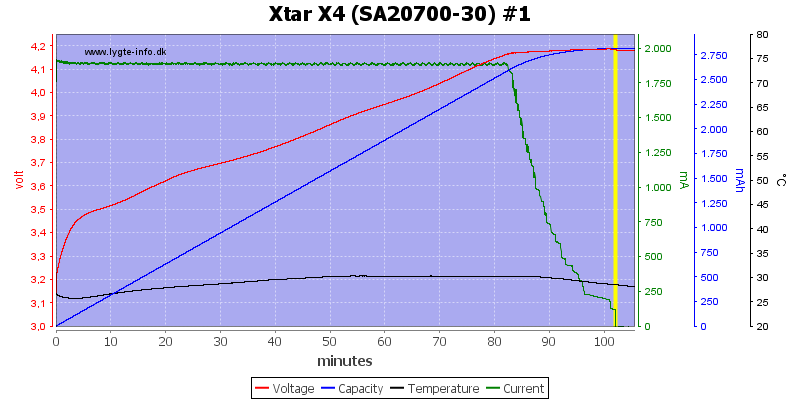
A larger battery with low internal resistance is charged fairly fast at 2A.
Display shows 2900mAh

Charging four batteries with USB power reduces the charger rate to 0.5A
Display shows 2938mAh, 3296mAh, 2995mAh, 3185mAh
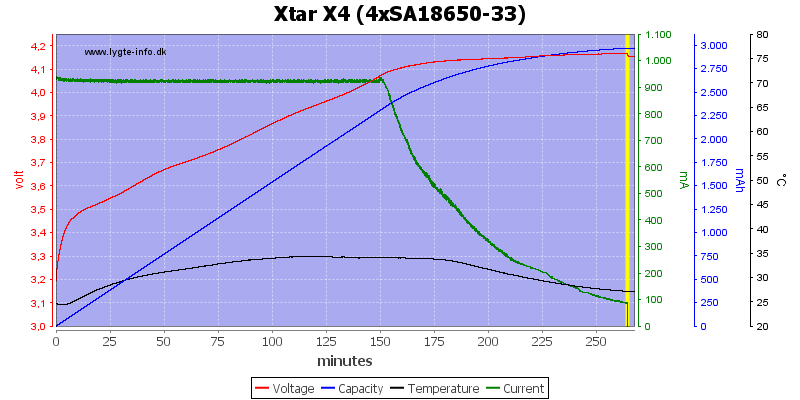
Using mains power the charger will charge with 1A.
Display shows 2979mAh. 3091mAh, 3098mAh, 2912mAh
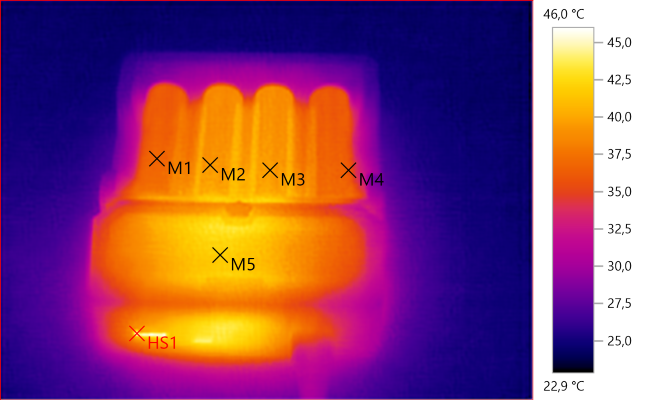
M1: 36.9°C, M2: 39.3°C, M3: 39.6°C, M4: 36.0°C, M5: 41.6°C, HS1: 46.0°C
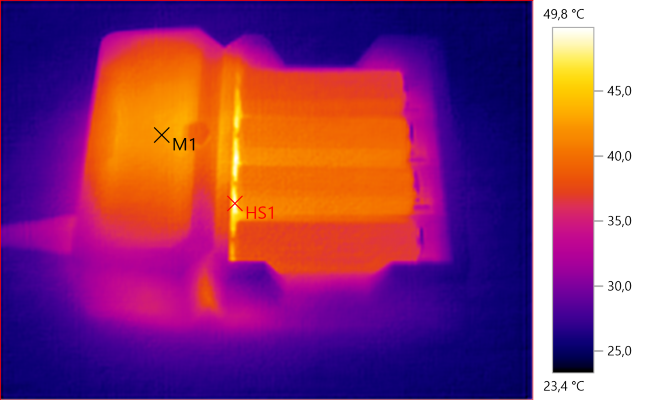
M1: 42.5°C, HS1: 49.8°C
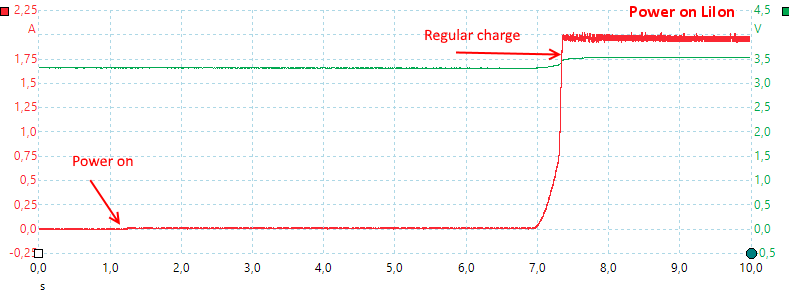
The charger needs about 6 seconds to turn on.
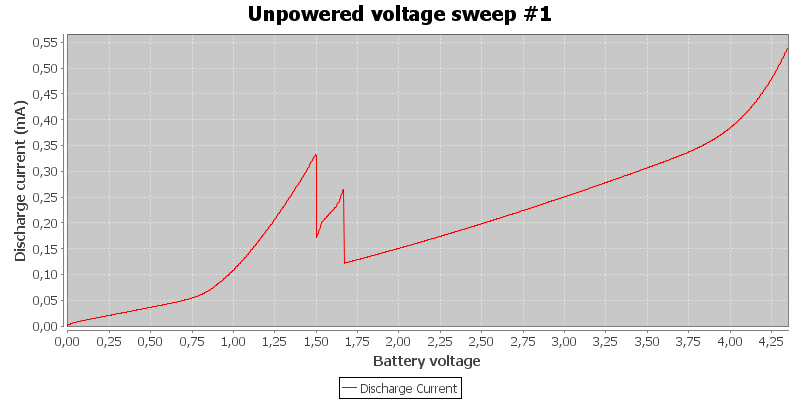
The charger will discharge a full LiIon battery with about 0.5mA.
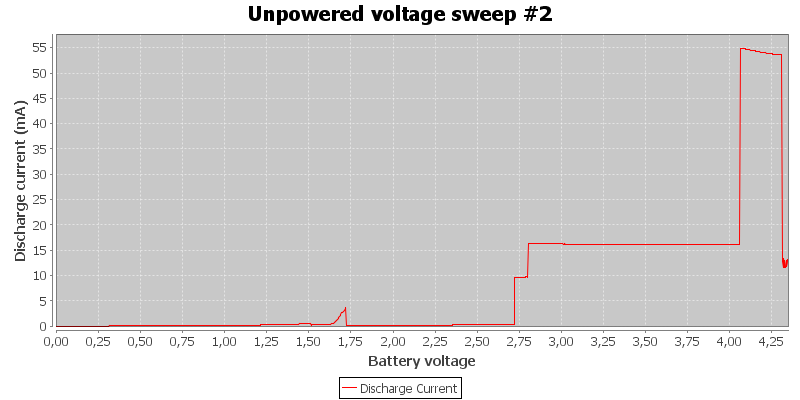
Except the USB slot where it will discharge with about 16mA (55mA while display is at full brightness).
It do turn the current draw off when the battery is empty, i.e. it will not over discharge batteries.
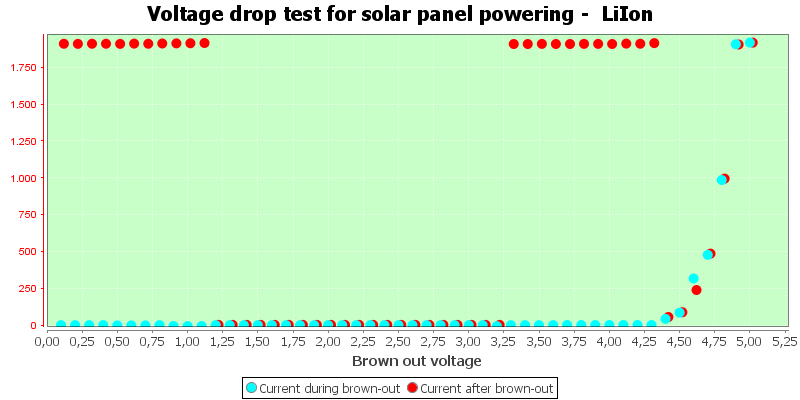
The charger will not work with a unstable voltage.
Charging NiMH
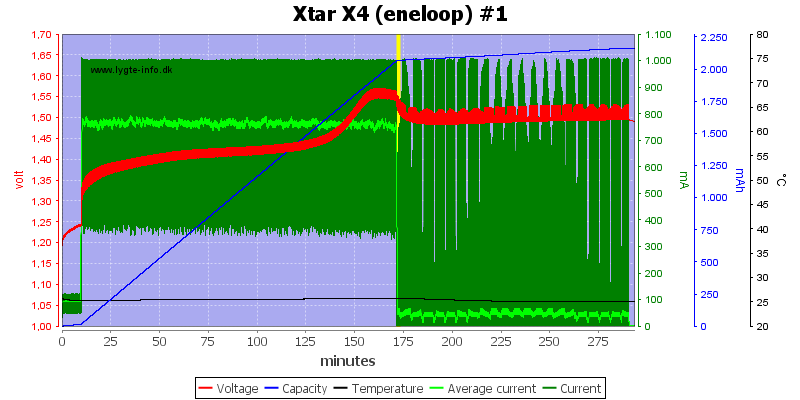
The charger uses a 10 minute precharge, before turning the full charge current on. The charger uses -dv/dt termination here and a two hour top-off charge at a fairly low current of about 50mA.
Display shows 1919mAh
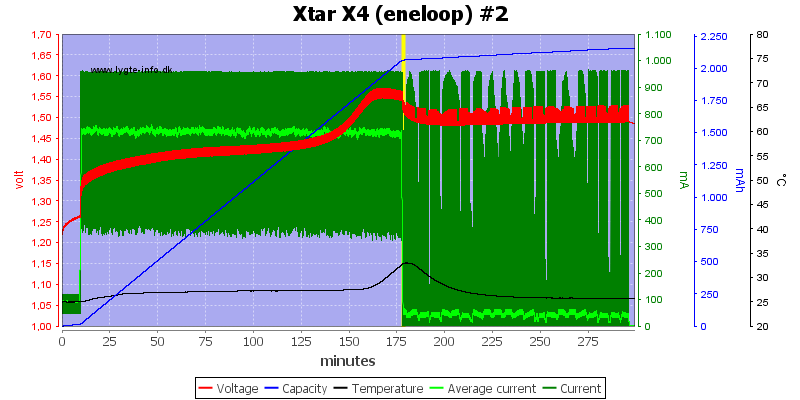
Display shows 2004mAh
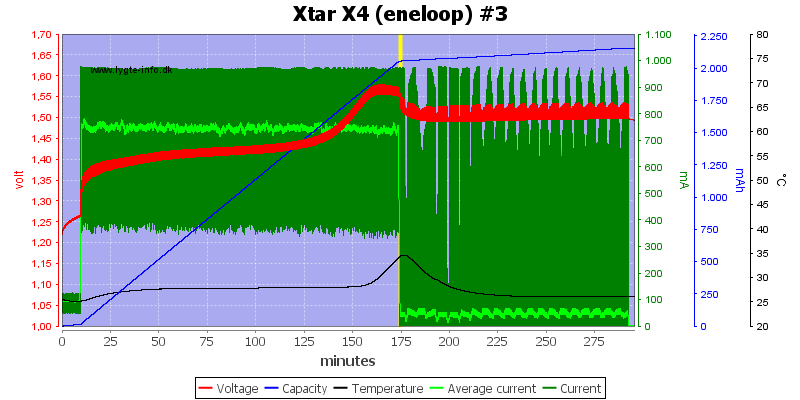
Display shows 1948mAh
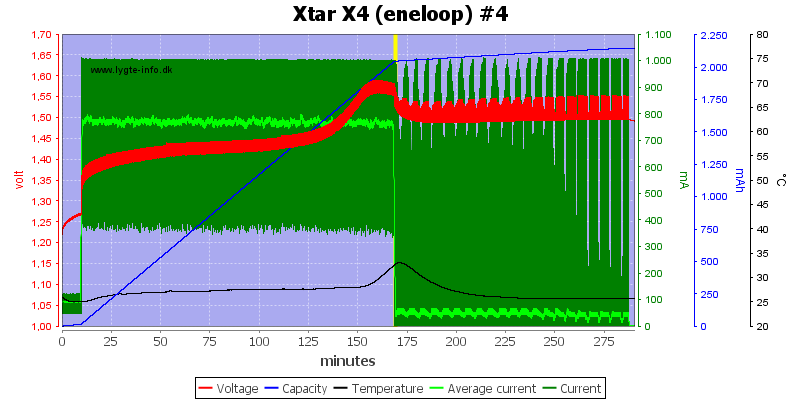
The other slots are similar.
Display shows 1880mAh
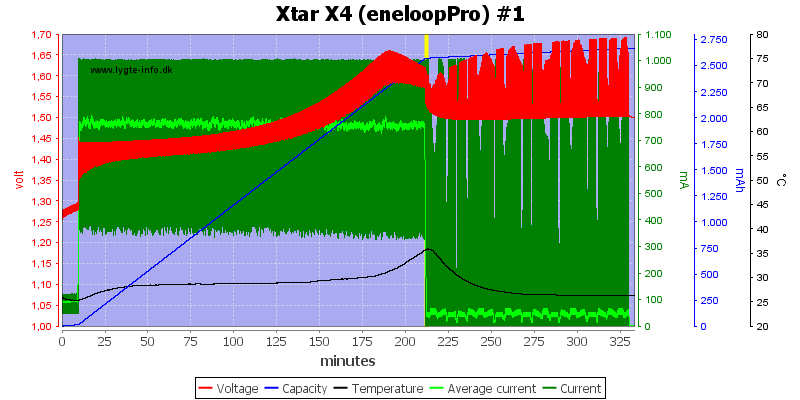
Display shows 2395mAh
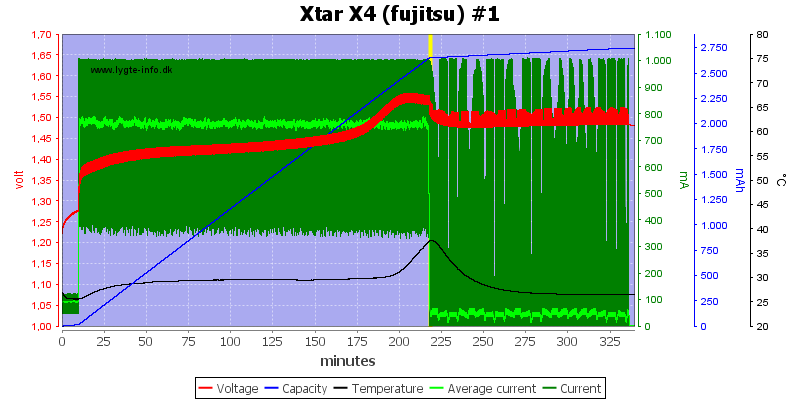
Display shows 2462mAh
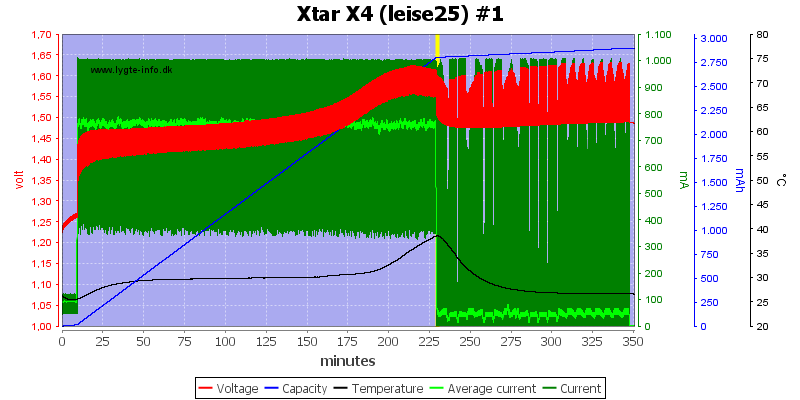
The 3 high capacity cells are also handled the same way.
Display shows 2606mAh

The AAA is charge with the same current as the AA cells.
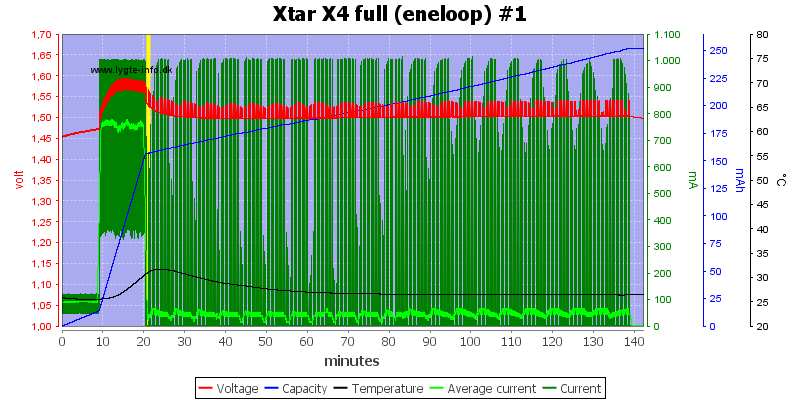
Detecting a full cell takes about 20 minutes, half of it used on the precharge. This cell also gets the two hours top-off charge.
Display shows 144mAh

Four cells is handled with the same speed.
Display shows 1953mAh, 1989mAh, 2022mAh, 1849mAh
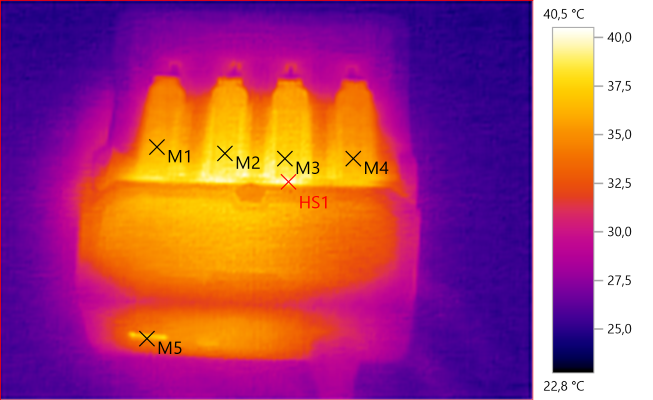
M1: 36.6°C, M2: 37.8°C, M3: 38.0°C, M4: 36.0°C, M5: 35.7°C, HS1: 40.5°C
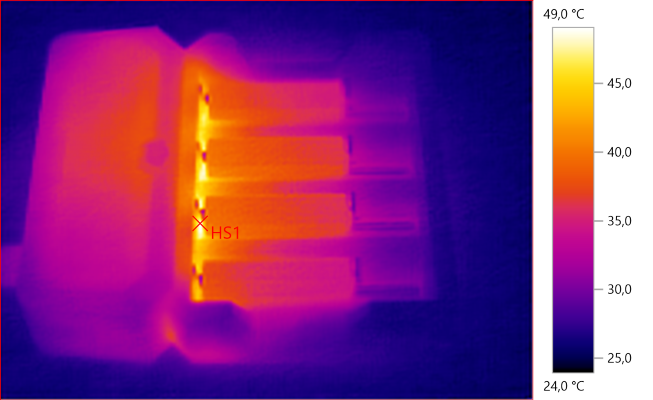
HS1: 49.0°C
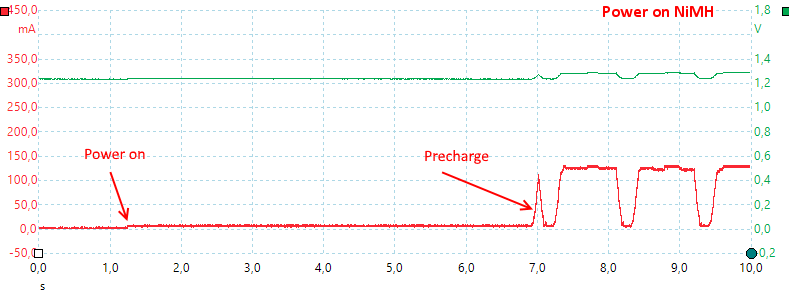
The charger uses the same time as for LiIon, before it starts on the precharge.
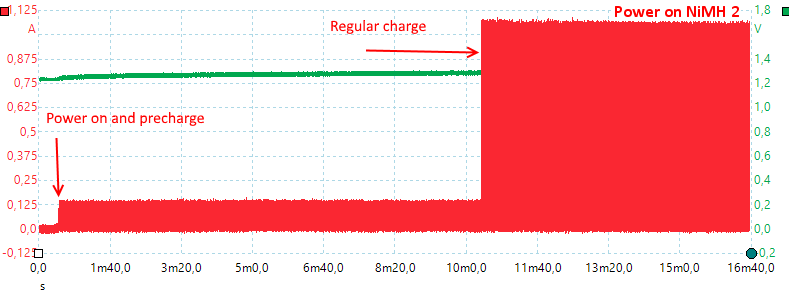
Including the precharge the startup time is 10 minutes.
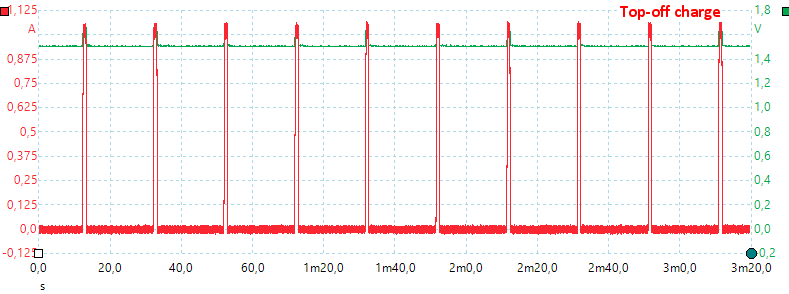
Top-off charge 1s at 1A every 20s or an average of 50mA.
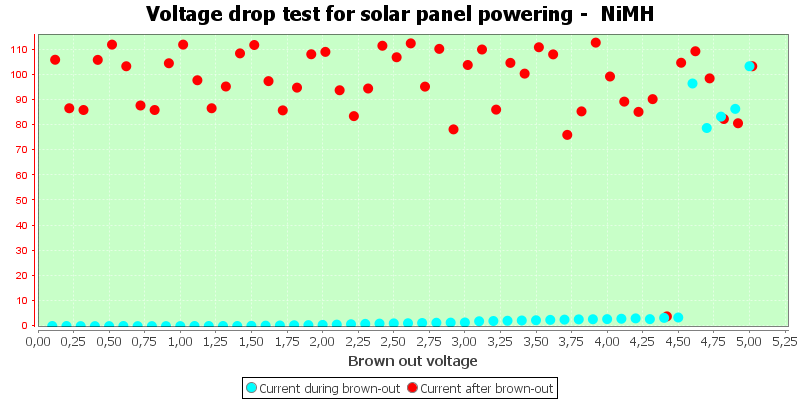
The charger handled unstable voltage considerable better with NiMH cells.
USB output
- When not powered it will discharge a LiIon battery with about than 15mA.
- Background light goes to low brightness after 60 seconds.
- USB output is coded as USB charger (DCP).
- USB output is turned off when charger is powered.
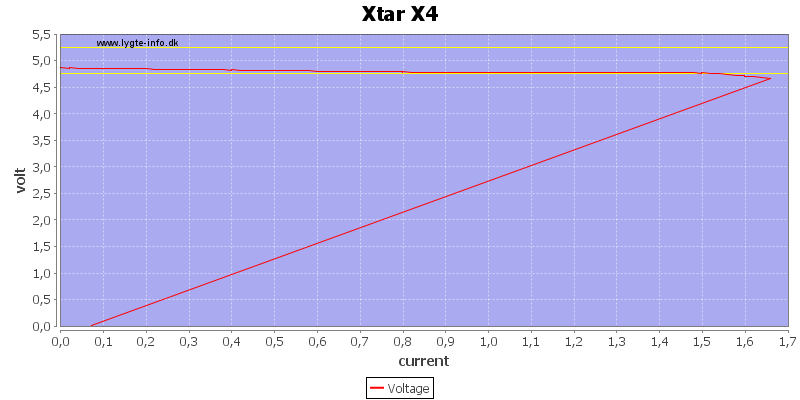
The USB output can easily deliver the rated 1A.
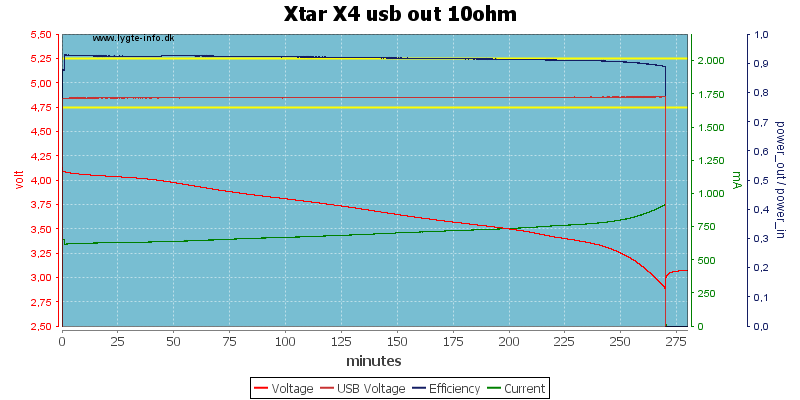
It maintains the output voltage until the battery is empty with a 0.5A load.

And also with a 1A load.
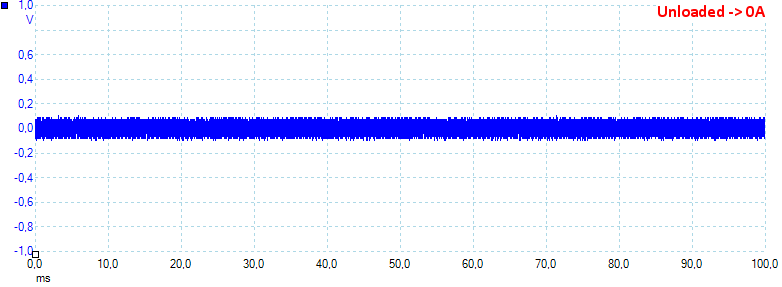
When unloaded there is some noise on the output, it is 51mVrms and 220mVpp

Loaded with 10ohm (about 0.5A) is about the same 49mVrms and 225mVpp when

At it increases slightly with a 5 ohm load (About 1A) to 62mVrms and 262mVpp.
Testing with 2830 volt and 4242 volt between mains and low volt side, did not show any safety problems.
Conclusion
The charger worked fine for all my test batteries, current will depend on length of battery, battery chemistry, power source slot and number of slots used.
The power bank function only use one battery and has a good boost converter, i.e. it can deliver rated current until the battery is empty.
I will rate it as a good charge and power bank.
Notes
The charger was supplied by a Xtar for review.
Here is an explanation on how I did the above charge curves: How do I test a charger









































































